Pricing Guides & Dictionary of Makers Marks for Antiques & Collectibles

COLLECTIBLE ITALIAN GLASS:
Beauty, Quality, and History in Every Piece
Join the most updated and complete collectibles research online - Learn more...
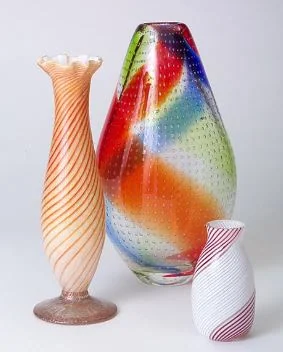 For centuries, Italy has been known for its mastery of glassmaking, producing some of the most beautiful and valuable glassware in the world. From delicate Venetian goblets to colorful Murano vases, Italian glass has captured the attention of collectors and enthusiasts worldwide. In this article, we'll explore the history, characteristics, and value of collectible Italian glass.
For centuries, Italy has been known for its mastery of glassmaking, producing some of the most beautiful and valuable glassware in the world. From delicate Venetian goblets to colorful Murano vases, Italian glass has captured the attention of collectors and enthusiasts worldwide. In this article, we'll explore the history, characteristics, and value of collectible Italian glass.
History of Italian Glassmaking
Glassmaking in Italy has a long and rich history that dates back to the Roman Empire. However, it wasn't until the 13th century that the Venetian Republic became the center of glassmaking in Europe. Venetian glassmakers developed innovative techniques, including the creation of cristallo, a type of clear glass that resembled rock crystal. They also produced stunningly beautiful glassware, such as goblets, mirrors, and chandeliers, that were highly valued throughout Europe.
During the Renaissance, Italian glassmaking continued to flourish, with the creation of new techniques, shapes, and colors. Murano, a small island near Venice, became famous for its glassmaking, producing intricate pieces such as vases, bowls, and sculptures. In the 20th century, Italian glassmaking continued to evolve, with designers like Carlo Scarpa and Fulvio Bianconi pushing the boundaries of traditional glassmaking techniques.
Characteristics of Italian Glass
Italian glass is known for its beauty, quality, and unique characteristics. Here are some of the key features of collectible Italian glass:
- Color: Italian glass comes in a wide range of colors, from bright and bold to soft and muted. Murano glass is particularly famous for its use of vivid colors, including reds, blues, greens, and yellows.
- Transparency: Many types of Italian glass, including Venetian cristallo, are known for their transparency, giving them a luminous quality.
- Decoration: Italian glass is often decorated with intricate designs, such as filigree, enameling, and gold leaf. Murano glass is especially known for its use of millefiori, a technique where colored glass rods are fused together to create intricate patterns.
- Shape: Italian glass comes in a wide range of shapes and sizes, from delicate goblets to oversized vases. Murano glass is particularly known for its sculptural quality, with pieces that resemble animals, flowers, and other objects.
Types of Italian Glass
There are many different types of collectible Italian glass, each with its own unique characteristics and history. Here are a few of the most popular types:
- Venetian Glass: Venetian glass is known for its clarity and delicacy. Cristallo, a type of clear glass, was developed in Venice in the 15th century and was highly prized throughout Europe. Venetian glassmakers also produced colorful goblets, mirrors, and chandeliers that were highly valued by the wealthy.
- Murano Glass: Murano glass is perhaps the most famous type of Italian glass. Produced on the island of Murano near Venice, Murano glass is known for its vivid colors, intricate patterns, and sculptural quality. Murano glassmakers use a wide range of techniques, including millefiori, filigree, and gold leaf, to create their stunning pieces.
- Fratelli Toso: Fratelli Toso is a glass company that was founded in Murano in the late 19th century. They are known for their use of murrine, a type of glasswork that involves fusing together small glass rods to create intricate patterns. Fratelli Toso also produced a wide range of glassware, including vases, bowls, and sculptures.
- Barovier & Toso: Barovier & Toso is another famous Murano glass company that has been producing glassware since the 13th century. They are known for their use of gold leaf and other decorative techniques, as well as their innovative designs. Barovier & Toso produced glassware for royalty and the wealthy throughout Europe and are still highly valued by collectors today.
Value of Collectible Italian Glass
Collectible Italian glass can vary widely in value, depending on factors such as age, condition, rarity, and provenance. Some pieces, such as antique Venetian goblets or rare Murano sculptures, can fetch tens of thousands or even hundreds of thousands of dollars at auction. Other pieces, such as mid-century modern designs by Carlo Scarpa or Fulvio Bianconi, may be more affordable but still highly collectible.
When purchasing collectible Italian glass, it's important to buy from a reputable dealer or auction house and to have the piece authenticated. Look for pieces with clear signatures or markings that indicate the maker and date of production. It's also important to carefully examine the piece for any damage or restoration, as this can significantly affect its value.
Conclusion
Collectible Italian glass is a beautiful and fascinating area of collecting, with a rich history and a wide range of styles and techniques. Whether you're drawn to delicate Venetian goblets or vibrant Murano vases, there is something for every collector to appreciate in Italian glassware. With proper care and attention, these pieces can be enjoyed and appreciated for generations to come.
Unlock the true value of your collection with our comprehensive research guides from identifying makers' marks to appraising all kinds of antiques and collectibles, including items featured in this article.
Our up-to-date information will give you an accurate understanding of your items' worth. Don't miss out on this valuable resource - visit our research tools today!
In addition to some examples shown below on this page, you can also search our price guide for your own treasures.
Examples of related items from our Price Guides
-
 (18PC) ITALIAN AL VALORE MILITARE & COMM
[more like this]
(18PC) ITALIAN AL VALORE MILITARE & COMM
[more like this]
-
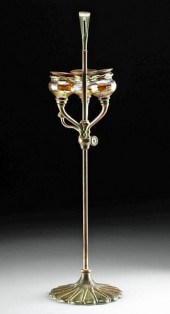 ART NOUVEAU FAVRILE GLASS & BRONZE CANDL
[more like this]
ART NOUVEAU FAVRILE GLASS & BRONZE CANDL
[more like this]
-
 STERLING. ASSORTED GROUPING OF STERLING
[more like this]
STERLING. ASSORTED GROUPING OF STERLING
[more like this]
-
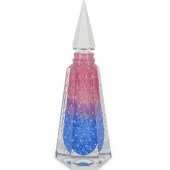 RARE STEUBEN CINTRA PAPERWEIGHT STYLE CO
[more like this]
RARE STEUBEN CINTRA PAPERWEIGHT STYLE CO
[more like this]
-
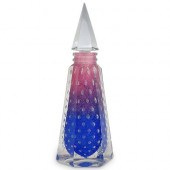 RARE STEUBEN CINTRA PAPERWEIGHT STYLE CO
[more like this]
RARE STEUBEN CINTRA PAPERWEIGHT STYLE CO
[more like this]
-
 French and Italian cruise line ephemera
[more like this]
French and Italian cruise line ephemera
[more like this]
-
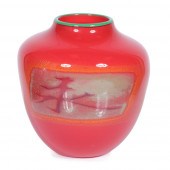 MICHAEL SOSIN, AMERICAN (20TH / 21ST CEN
[more like this]
MICHAEL SOSIN, AMERICAN (20TH / 21ST CEN
[more like this]
-
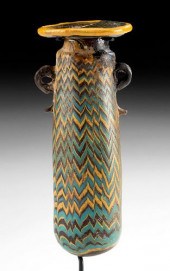 EXHIBITED / PUBLISHED GREEK COREFORM GLA
[more like this]
EXHIBITED / PUBLISHED GREEK COREFORM GLA
[more like this]
-
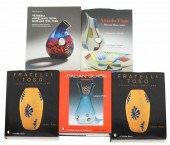 (5) COFFEE TABLE BOOKS ITALIAN MURANO AR
[more like this]
(5) COFFEE TABLE BOOKS ITALIAN MURANO AR
[more like this]
-
 19TH CENTURY ITALIAN SCHOOL POSSIBLY PIE
[more like this]
19TH CENTURY ITALIAN SCHOOL POSSIBLY PIE
[more like this]
-
 ITALIAN SCHOOL 19TH C. PAINTING, THE ANG
[more like this]
ITALIAN SCHOOL 19TH C. PAINTING, THE ANG
[more like this]
-
 AFTER PIETRO CAMPORESI (ITALIAN, 1726-17
[more like this]
AFTER PIETRO CAMPORESI (ITALIAN, 1726-17
[more like this]
There are many more auction results available to our members...





